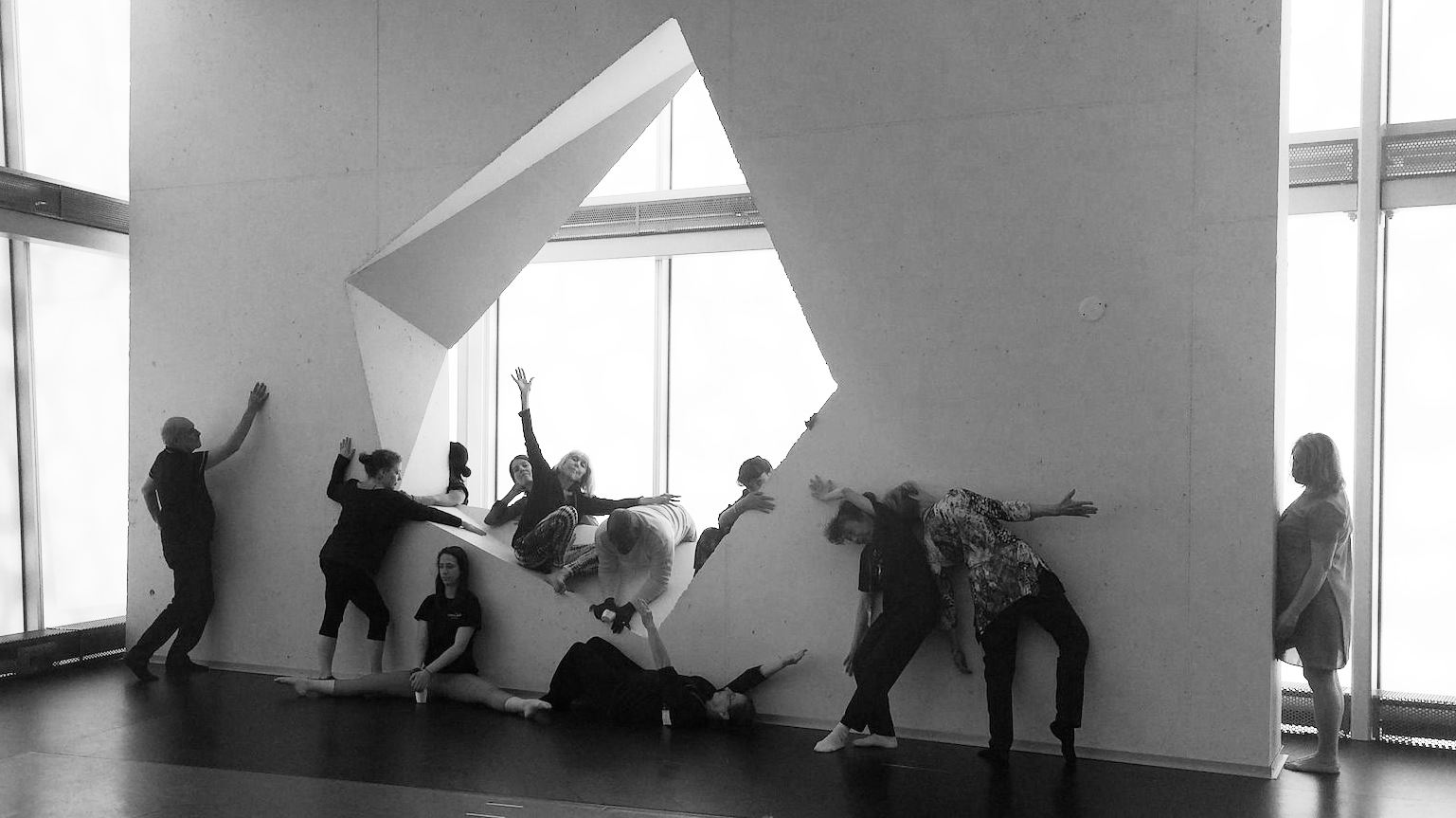Soma-City explores how the complex linkages between the moving body and the urban environment can inform the practices of architecture, urban and landscape design. The word soma is derived from the late 19th century Greek sōma, meaning ‘body in its completeness’ and somatikos meaning ‘lived body’.
![]()
![]()
Paired with the word ‘city’ the title invites hybrid approaches to design research that combine somatic and urbanistic practices to generate new methodologies for site research, pedagogy and design.
Emerging from the interdisciplinary collaborative work of Lisa Sandlos and Rennie Tang, researchers in the fields of dance and urban design respectively, this research focuses on bodies as a collectors and producers of knowledge integral to the urban systems that drive the making of cities. The pairing of ‘soma’ and ‘city’ is a provocation to stimulate new modes of thinking about the symbiotic relations between bodies and cities that enable the co-creation of meaningful human experience. Soma-City is interested in the design of urban spaces that encourages the dynamic quality and richness of human movement, an integral component to the built environment that is essential to the vibrancy of cities. Movement not only surrounds us in our daily lives but we ourselves are active participants in it and thereby contributors to the making of space itself.
At a broader level the project is an urgent call to a crisis on the horizon, one that is deeply concerned about how our technologically-centered sedentary lifestyles have led to the decline of embodied presence in urban space. Could our dependency on automated systems lead to an evolutionary change where the functioning of our bodies is significantly diminished? Can we design cities that heighten our consciousness of this pending crisis and reawaken our physical engagement with urban space? Just as the environmental movement has demanded ecological responsibility, emphasized by the prolific use of the prefix ‘eco,’ we propose the necessity of introducing the prefix ‘soma’ as a means of calling attention to the crisis of disembodiment in our midst. The goal of this research is to develop design methodologies grounded upon somatic and choreographic principles as tools to invoke new forms of pedagogy and practice across the fields of architecture, landscape, urbanism and dance. Through this practice-based research we strive to make cross-disciplinary concepts tangible, accessible and thought-provoking while opening up critical questions for all the disciplines involved.

Paired with the word ‘city’ the title invites hybrid approaches to design research that combine somatic and urbanistic practices to generate new methodologies for site research, pedagogy and design.
Emerging from the interdisciplinary collaborative work of Lisa Sandlos and Rennie Tang, researchers in the fields of dance and urban design respectively, this research focuses on bodies as a collectors and producers of knowledge integral to the urban systems that drive the making of cities. The pairing of ‘soma’ and ‘city’ is a provocation to stimulate new modes of thinking about the symbiotic relations between bodies and cities that enable the co-creation of meaningful human experience. Soma-City is interested in the design of urban spaces that encourages the dynamic quality and richness of human movement, an integral component to the built environment that is essential to the vibrancy of cities. Movement not only surrounds us in our daily lives but we ourselves are active participants in it and thereby contributors to the making of space itself.
At a broader level the project is an urgent call to a crisis on the horizon, one that is deeply concerned about how our technologically-centered sedentary lifestyles have led to the decline of embodied presence in urban space. Could our dependency on automated systems lead to an evolutionary change where the functioning of our bodies is significantly diminished? Can we design cities that heighten our consciousness of this pending crisis and reawaken our physical engagement with urban space? Just as the environmental movement has demanded ecological responsibility, emphasized by the prolific use of the prefix ‘eco,’ we propose the necessity of introducing the prefix ‘soma’ as a means of calling attention to the crisis of disembodiment in our midst. The goal of this research is to develop design methodologies grounded upon somatic and choreographic principles as tools to invoke new forms of pedagogy and practice across the fields of architecture, landscape, urbanism and dance. Through this practice-based research we strive to make cross-disciplinary concepts tangible, accessible and thought-provoking while opening up critical questions for all the disciplines involved.
